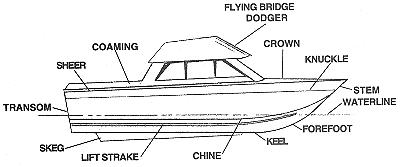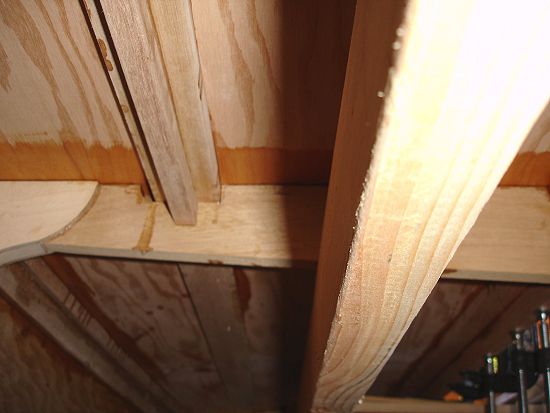Is the Planking Attached to the Frames?
Posted by Gayle Brantuk on Jan 26th 2011
A builder emailed today asking if the side planking for the Outrage is attached to the frames. The Outrage is a 16′ deep vee ski boat and is built using sheet plywood construction. My father wrote an article on the subject of fastening planking to frames and includes a great history lesson about the evolution of plywood boat construction.
In most sheet plywood boats, the side and bottom planking are not attached to the frames. Often the frames don’t even contact the planking. The reason you don’t attach it to the frames is because this will set up a stress point in the wood that could lead to it failing.
The frames of a boat provide the shape for the hull. The longitudinals, which are the pieces that run from stem to transom are used to take the stress off the plywood and provide a surface for fastening.
The chine and sheer are fastenened to the frames and then the planking is attached to the chine and sheer but not the frames. The battens also provide additional stiffening and strength to the bottom and sometimes the side planking. They act as a means of distributing the stress of the hull throughout the sheet of plywood.
The battens will either rest on top of the frames as in the “floating frame” type of construction or they are notched into the frames. Always refer to the instructions specific to the boat you are building. The bottom battens begin at the transom and run as far forward as possible–some are even fastened at the stem or chine. They must never end on a frame though.
It will sometimes be necessary to kerf the battens lengthwise in order to relieve them enough to conform to the plywood. Once fitted, the battens are glued and fastened into the planking. In our opinion, the wider the battens on the bottom, the better. They can also be reinforced with a tee-section to provide even more ridgity.
Mark Shipley added reinforcement to his bottom battens
There may be a void between the planking and the frames. You can fill that void by applying thickened epoxy to the edge of the frame to fit the contour of the planking. This will also provide protection to the exposed plywood edge. In addition, the frames should be coated with epoxy which will penetrate the wood and protect it from moisture.
Again, please be sure and read the instructions for the boat you’re building and defer to them. The above are general rules and there’s always that one design that’s an exception, right? Our book, Boatbuilding with Plywood details this subject as well as everything else you need to know to build a plywood boat.
Sometimes guys get caught up with understanding all the why’s and what if’s of boatbuilding that it keeps them from even starting. They can get carried away with trying to “get” how it all works. I completely understand that, but sometimes you just have to do it. The plans work and many, many folks have built our designs. Just start building and it will make sense…

